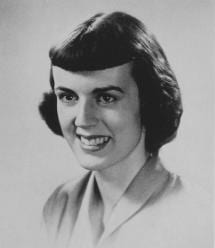Abstract
In Part 1 of this interview, Lois Black begins by explaining what it felt like to attend Pembroke College with a working class background. She describes her first experiences of Pembroke, including living in East House, and the differences between private and public high school students. Black goes on to discuss racism at Pembroke, the exclusion of women from the Brown Marching Band and Brown Sailing Association, and her participation in student movements for desegregation and reformation of gracious living regulations.
In Part 2, Black remembers Dean Nancy Duke Lewis and Emily Lacey as administrators and role models, and recalls dormitory regulations, including the exclusion of married women. Black describes sex discrimination experienced in her graduate classes, her marriage and its effect on her academic career. Speaking again of her time at Pembroke, Black discusses male/female relations at Brown, and the effect of the Korean War.
The interview concludes in Part 3 with Black’s reflections on the Pembroke-Brown merger, and the political role of women’s colleges.
Part 1
Part 2
Part 3
Recorded on March 27, 1990 in Providence, RI
Interviewed by Juliette Smith
Suggested Chicago style citation: Black, Lois. Interview. By Juliette Smith. Pembroke Center Oral History Project, Brown University. March 27, 1990.
Biography
Lois Black was born on November 16, 1931, in Boston, Massachusetts and attended Watertown Senior High School. She had an older sister who convinced her to go to college. Black spent much of her time at Pembroke College thinking about the ways in which sexism pervaded her life, and fighting the exclusions it perpetuated. She graduated in 1953 with an A.B. in biology. After college, Black pursued a Fulbright Scholarship in Strasbourg to study embryology, then came back to the U.S., received a master’s degree from Yale in zoology, and taught biology. She married a Yale graduate student and both went to Cornell for further graduate studies, hers a Ph.D. in Physiological Psychology. Together they had four children.
